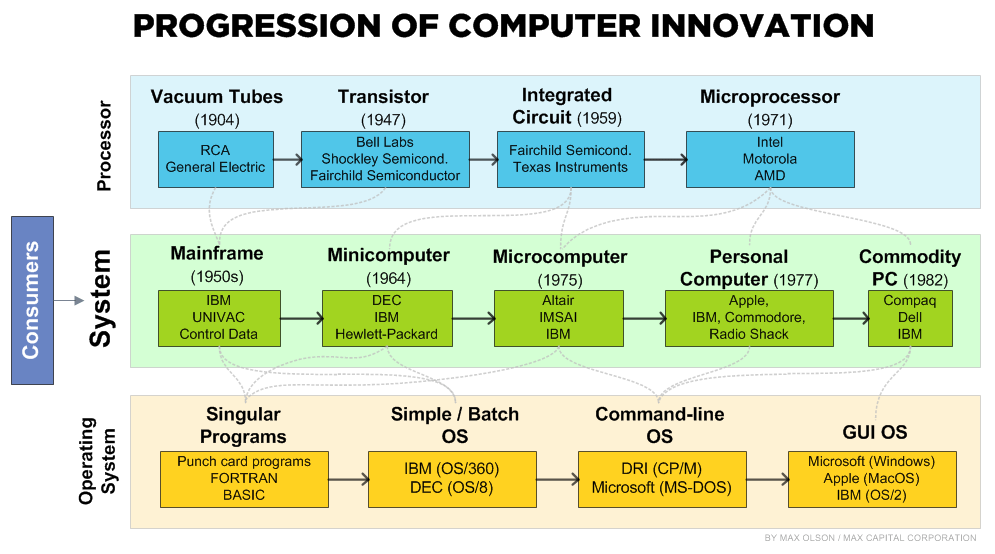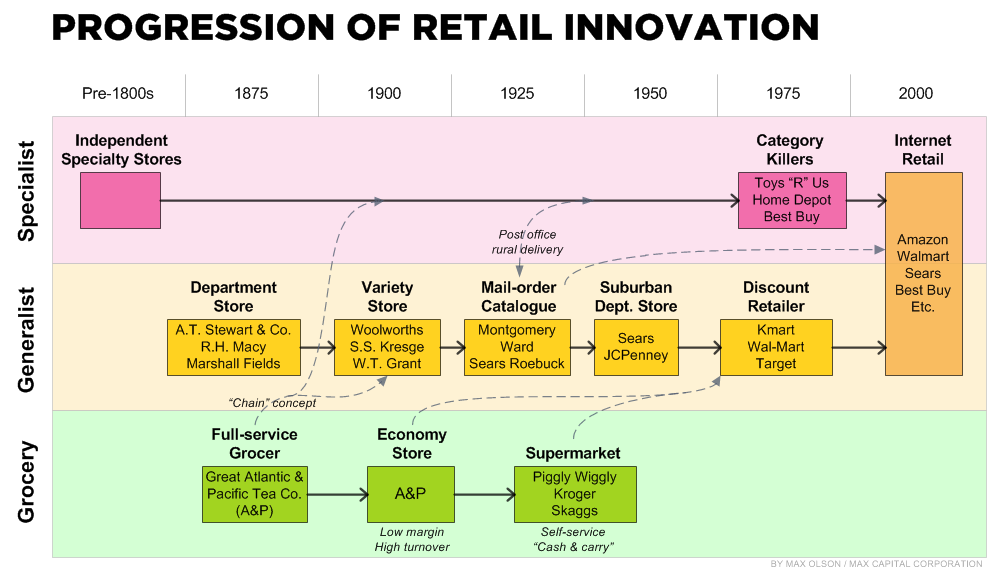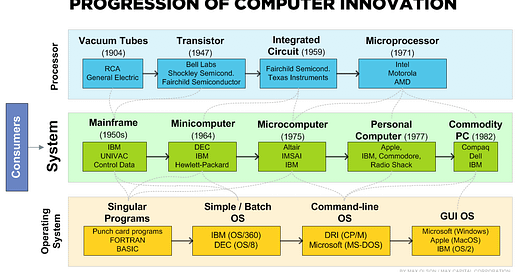The Progression of Innovation
It's good for any investor or business person to know where their company fits when it comes to the progression of innovation. Even if a certain company or product isn't new, at some point in time the business it's in was. Throughout history, innovations (whether they be technological inventions or innovations in business model) came about that performed a certain "job" better than the status quo. Most of these innovations didn't arrive spontaneously -- they were built upon or evolved from their predecessors.
The following is a simplified chart/timeline of innovations in the computer industry:

Consumers purchase computer systems, with new innovations or shifts in one component (processors or operating systems) driving innovation in computer design and vice versa. Other components like storage and display also drove innovation but were less important in this context. Most of the above innovations are technical, with the exception of the commodity PC makers (Dell, Compaq, etc.) which were an innovation in business model.
After money was transferred from consumers to computer makers, it went primarily to chip makers and OS developers. Because suppliers like Intel and Microsoft had strong competitive advantages, they had strong bargaining power, and therefore received and kept most of the value.
Retail Industry
The progression of innovation doesn't just apply to industries as technical and complex as computers. Below is another timeline (dates are approximate) of the progression of the retail industry:

As you can see, the speed of innovation in retail is much slower than the computer industry (but still faster than other businesses, like consumer staples). Innovations and shifts in the retail industry were driven by both (1) prior retail innovations, like discount retailers combining the variety store model with the grocery model of low margin/high turnover; and (2) outside-industry innovations, like railroad transportation leading to nationwide chains, free rural postal delivery leading to mail-order catalogues, and the internet leading to online retail.
If you've got any suggestions or critiques of the above charts, let me know in the comments or through email. I tried to get all the facts right for a simplified version of the timelines, but may have missed something.




